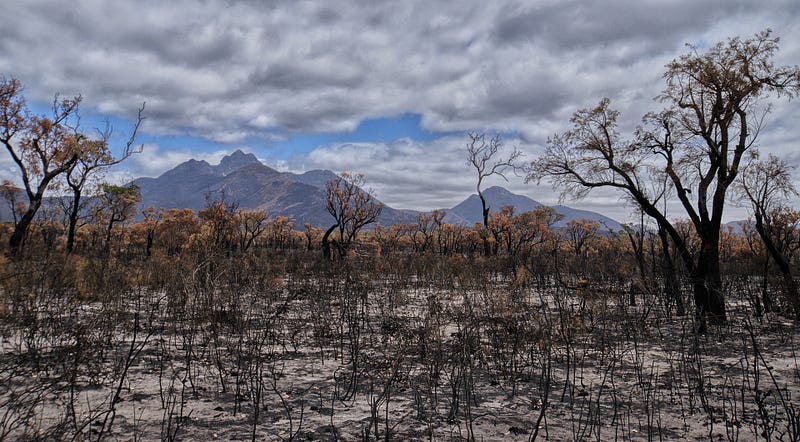Climate Action Needed
The Devastating Effects of the Australian Fires
By Maria Harsvik, Behavioral Neuroscience, 2023

From the viral spread of images showing severely burned koalas wrapped tightly in rescue blankets to donation pages dominating social media outlets, nearly everyone has some idea of the impact of the Australian bushfires. However, it remains unclear if the general public understands the greater issue at stake. More than just another natural disaster, the bushfires are a manifestation of the devastating effects of climate change. It is important that we continue to inform others of the greater need for climate action.
Starting in September 2019, the bushfires in Australia contributed to establishing the worst wildfire season on record. New South Wales and Victoria have been the worst affected areas, which pushed the government to declare the Australian Capital Territory under a state of emergency. With at least 33 people dead, 2000 homes destroyed, 10 million hectares burned, and 1 billion animals killed, the scale is simply unprecedented.
As a reference of comparison, the area burned is three times larger than the 2015 Amazon fires. Earth Observatory NASA recorded the “largest plumes of smoke higher into the stratosphere than satellites have ever observed.” The gas produced was also three times as great as the amount of poisonous and colorless gas generated by the fires in British Columbia in 2017 and Australia in 2009, respectively. Zooming in from the satellite images, communities remain devastated, forever changed, and desperately in need of appropriate action.
“It is deathly silent when you go into a forest after a fire.”
In addition to displaced people, ecosystems also struggle to recover after fires of this magnitude. “It is deathly silent when you go into a forest after a fire,” describes Michael Clark, an ecologist at La Trobe University who studies the effect of fires on ecosystems. Any surviving animals in the aftermath of a bushfire must find shelter, escape the grips of starvation, and avoid exposure from predators. In the now barren landscape, animals struggle to find somewhere to hide. The key to survival in a burning forest is to go underground; animals that can do this are more resilient.
Additionally, animals such as koalas are particularly susceptible to the bushfires as they live in isolated, small populations. The numbers of koalas that have perished continue to rise but are currently estimated to be as many as 8,400. As an iconic Australian species, koala vulnerability has raised media awareness of the ongoing bushfires. However, other lesser-known species are also being pushed to extinction, such as the brush-tailed rock-wallaby and the Kangaroo Island dunnart, which has lost nearly all its habitat.
The overwhelming question facing Australian politicians, environmentalists, and citizens alike is how to recover from the bushfires. That is not to say that the bushfires are over and certainly does not take away from the fact that many of the effects are already irreversible. The recovery time largely depends on the amount of rainfall that follows after the dry season, which is very unpredictable. Most importantly, the future for ecosystems lies in protecting pockets of forest habitat that are left.
The overwhelming question facing Australian politicians, environmentalists, and citizens alike is how to recover from the bushfires.
With the worsening effects of climate change, the bushfires are not unexpected. The combination of increased hot temperatures and decrease in rainfall increases the risk of bushfires. Even before this deadly fire season began, the estimated days with high to extreme fire risk was expected to increase significantly.
“We are seeing three big changes: increased frequency of fire, increased severity, and increased extent of these blazes,” Clark says, breaking down the correlation between climate change and fires. Without immediate climate action in Australia, bushfires could become the norm, continuing to destroy ecosystems and threatening vulnerable communities. Under the Paris Climate Agreement, Australia is expected to reduce emissions 26 to 28 percent by 2030 relative to 2005. It is clear through tracking their current progress that they will not meet even half of their reduction goals.
Nature (2020). DOI: 10.1038/d41586–020–00043–2
The Lanket Planetary Health (2020). DOI: 10.1016/S2542–5196(19)30267–0
